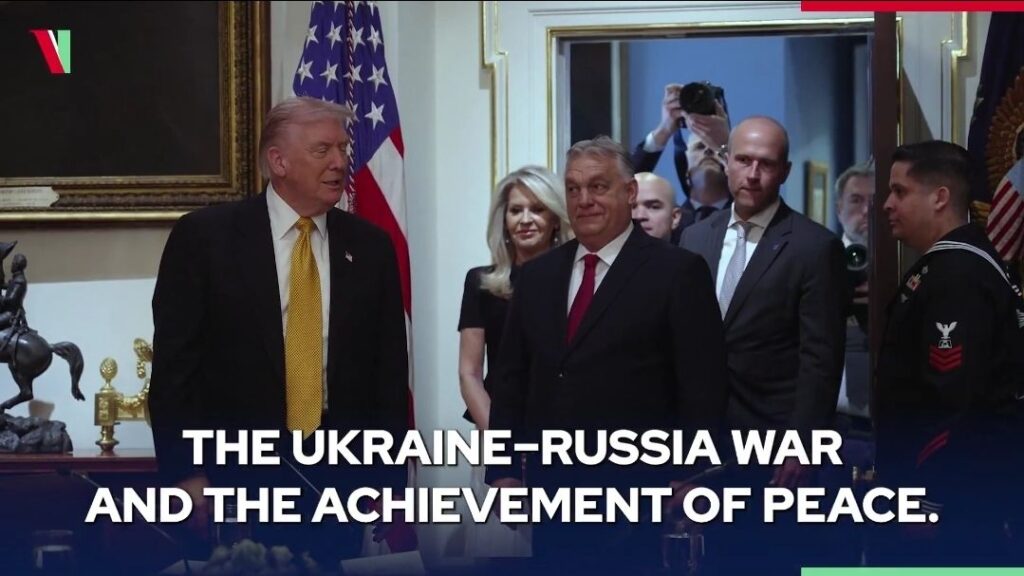WASHINGTON D.C Nov 8, 2025 – Hungarian Prime Minister Viktor Orbán declared on Saturday that his government is fully committed to supporting U.S. President Donald Trump’s efforts to broker peace in the ongoing Ukraine-Russia war, emphasizing continued diplomatic initiatives and teasing a potential “Budapest Peace Summit” as a key venue for negotiations.
Speaking at a joint press conference flanked by Polish Prime Minister Mateusz Morawiecki, Orbán reflected on their extended discussions about global security, particularly the protracted conflict in Eastern Europe. “We had a long discussion on the issue of war and peace,” Orbán said, according to a video clip shared on his official X account. He distilled the conversation into two core takeaways: an unwavering push for peace and Hungary’s proactive role in facilitating it.
In the footage, captured amid Hungarian and American flags, Orbán underscored the need for sustained efforts. “The first [point] is that peace efforts must continue,” he stated. “Both governments are determined to pursue the conditions and efforts necessary for peace. Hungary specifically offers its own capabilities to assist the President of the United States regarding the Ukraine-Russia war and the achievement of peace.”
This pledge comes amid heightened transatlantic focus on resolving the conflict, which has raged since Russia’s full-scale invasion in February 2022. With Trump having returned to the White House following his 2024 election victory, European leaders have been recalibrating their approaches to align with his administration’s emphasis on rapid de-escalation and negotiated settlements. Orbán, a longtime skeptic of unchecked Western military aid to Kyiv and a vocal advocate for dialogue with Moscow, has positioned Hungary as a potential neutral ground for talks.
The second highlight from the presser was Orbán’s reference to a prospective summit in Budapest. “The second sentence is that the Budapest Summit is on the agenda,” he noted. “And as the necessary conditions come together for this, although no one can give an exact date yet, this summit in Budapest will take place.”
Morawiecki, whose conservative Law and Justice party shares ideological affinities with Orbán’s Fidesz, appeared supportive during the event, though he did not deliver remarks in the shared clip. The Polish leader has historically taken a harder line on Russia but has recently signaled openness to multilateral peace forums, especially as Poland grapples with the war’s spillover effects, including refugee influxes and energy disruptions.
Orbán’s overture drew mixed reactions online. Supporters praised it as a pragmatic step toward stability, with one X user commenting, “Refreshing to finally see real leaders talk about peace instead of endless war.” Critics, however, accused him of undue deference to Moscow and Trump, with another replying, “You disgust me with your sycophantic behaviour to Trump and ruZZia… RuZZia must be defeated.”
The proposal aligns with Orbán’s broader foreign policy, which has often clashed with mainstream EU positions on Ukraine. Hungary has repeatedly blocked or delayed EU sanctions and aid packages, arguing they prolong the fighting. Trump, during his campaign, promised to end the war “in 24 hours” through direct negotiations, a stance that resonates with Budapest’s calls for ceasefires and territorial compromises.
As of Sunday, no formal date has been set for the Budapest talks, and details on potential participants—such as representatives from Kyiv, Moscow, or NATO allies—remain unclear. The Hungarian government has not yet responded to requests for further comment, but Orbán’s office reiterated in a statement that “peace efforts must continue without delay.”
This development underscores shifting dynamics in Europe-U.S. relations under Trump’s second term, with smaller nations like Hungary seeking to carve out influential roles in high-stakes diplomacy. Analysts suggest the summit idea could gain traction if it attracts buy-in from key stakeholders, potentially marking a turning point in the conflict’s trajectory.

